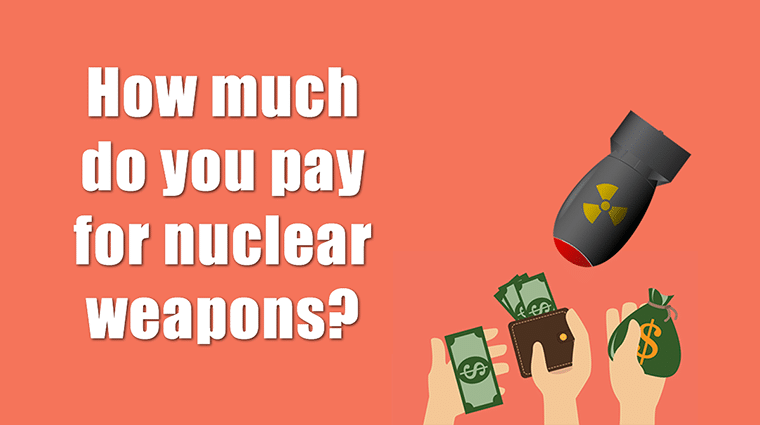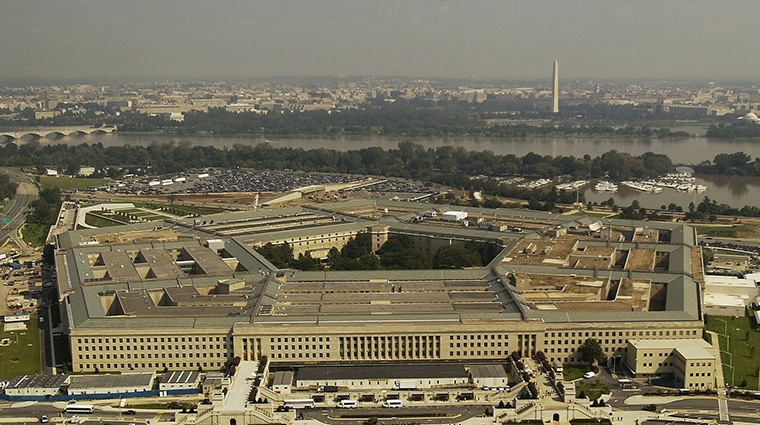The original cleanup was done “on the cheap,” says Bob Schaeffer, consultant to the Alliance for Nuclear Accountability. It “needs serious cleanup….Instead, the feds decided to just bury what they could and walk away and declare it a wildlife refuge so people wouldn’t be living on it.”
The Cold War never erupted into the nuclear nightmare that the world feared for decades. But the legacy of the never-used nuclear weapons remains a ticking time bomb that could endanger countless people and lead to environmental catastrophe any time.

In the United States, there are more than 150 sites that have to be managed for nuclear waste for centuries or millennia. But, according to a Government Accountability Office (GAO) report, the US Department of Energy (DoE) — which is charged with managing dangerous, radioactive waste and contaminated soil and water leftover from weapon construction — appears to lacks the capacity for the task.
DoE’s Office of Legacy Management (LM) manages 100 nuclear waste dumps with 51 or 52 more sites expected to fall under its jurisdiction by 2050 (one site remains in question). The sites range all over the country, from Amchitka in the western Aleutians to El Verde on the east side of Puerto Rico. The Legacy Management office takes over maintenance of dangerous sites after other managers — including DoE’s Office of Environmental Management, US Army Corps of Engineers, and private licensees — have cleaned them up.
The GAO report, “Environmental Liabilities: DoE Needs to Better Plan for Post-Cleanup Challenges Facing Sites” (pdf), issued earlier this year, found, among other things, that the DoE doesn’t have a plan for how to address challenges at some sites that may require new cleanup work that is not in the scope of LM’s expertise.
Nor, says the report, does it have a strategy in place to assess and mitigate the effects of climate change on these sites, that need to be safeguarded against increasingly frequent and severe rainfall, tornadoes, hurricanes and accompanying flooding and forest fires. It foresees that the DoE will need yet-to-be-developed technology and untold billions of dollars to keep the stored nuclear waste from contaminating air, soil and water.
The report notes that the Office of Legacy Management has not developed agreements or procedures in collaboration with the Office of Environmental Management (EM) or the Nuclear Regulatory Commission (NRC) to figure out how to contain the radioactive waste. The Legacy Management office estimated its liabilities (in the 2019 fiscal year) at 503.3 billion – but that could be a vast underestimate as it doesn’t know what hazards or costs may develop. The cost estimates go only 75 years out and don’t include estimates for the cost of protecting the 50 plus sites it will have to take over in the next few decades. For instance, these estimates don’t account for the Elemental Mercury Storage Facility near Andrews, Texas, which DoE hasn’t inherited yet, but where the department has decided to store up to 6,800 metric tons of elemental mercury — a major environmental pollutant.
“LM has not developed agreements or procedures for addressing challenges that require active cleanup work at sites cleaned up by EM because LM has not yet encountered such instances at any of it sites,” the report warned.
The Office of Legacy Management’s 2020 Site Sustainability Plan only mentions climate change once and doesn’t discuss remedies. Officials said they were too busy to worry about it.
To make its job even harder, the Legacy Management office has to deal with problems not originally thought of because of new federal or state regulations or hazardous chemicals found after it was handed over the sites. After it inherited places such as the shuttered Rocky Flats nuclear weapons plant outside Denver, for example, the Environmental Protection Agency (EPA) issued rules regarding per- and polyfluoroalkyl substances (PFAS), a class of toxic chemicals that don’t degrade, and vapor-forming chemicals that weren’t considered in the original cleanups. The Legacy Management works with state and federal agencies on such problems but the mandate isn’t clear as to which agency is responsible for cleaning up what.. And the original manufacturer gets off the hook.

DoE and the Trump administration have recognized the Legacy Management office’s problem to some degree: While the administration has been trying to slash budgets and regulations for many environmental programs, it asked Congress to nearly double the agency’s budget, from $162.029 million in 2020 to $316.993 million for 2021.
In the meantime, however, some of these sites have already been creating serious problems.
At Rocky Flats, which has become surrounded by suburban development since its 1992 closure, excessive rain damaged the facility in in 2013. The soil, sediment, groundwater, and surface water of the former nuclear weapons manufacturing site had been contaminated with hazardous chemicals and radioactive constituents as a result of “manufacturing activities, accidental industrial fires and spills, support activities, and waste management practices,” according to EPA.
Even after cleanup, several ponds and landfills remained contaminated. In recent years, excessive rainfall and erosion has damaged the site again in the past few years. The office Legacy Managment considers Rocky Flats as its biggest liability ($452 million). In 2016, the estimated cost of just maintenance and surveillance of the site totaled $269 million.
Outside of the core area around the plant, DoE declared most of Rocky Flats cleaned up and turned 80 percent of the land over to the US Fish & Wildlife Service (FWS) for a national wildlife refuge. “We have done ‘beneficial reuse,’ turned land into parks and wildlife refuges. We try to find ways to reuse the land,” says David Shafer, the Office of Legacy Management’s deputy director for site operations. (In another instance, cattle are grazing on hay grown on some Texas sites)
FWS is considering building a Rocky Mountain Greenway bike trail through the refuge. But citizens groups are fighting it, saying it would expose cyclists to dangerous levels of contaminants such as plutonium dioxide. Recent soil samples showed higher levels than earlier tests FWS relied on.
The original cleanup was done “on the cheap,” says Bob Schaeffer, consultant to the Alliance for Nuclear Accountability. It “needs serious cleanup….Instead, the feds decided to just bury what they could and walk away and declare it a wildlife refuge so people wouldn’t be living on it.”
Recent soil samples, taken privately, have shown high levels of plutonium dioxide, a poison if inhaled. “There is a health issue that is not being addressed by the state health department, EPA, DoE or FWS,” charges Chris Allred, administrator of the Rocky Mountain Peace & Justice Center.
Among the many other problem sites, the Legacy Management office is struggling to figure out what to do with contaminated groundwater at the Shiprock nuclear waste dump on the Navajo Nation Indian Reservation in northwest New Mexico. Contaminated water, the legacy of uranium mining for nuclear power plants and weapons, is being pumped to an evaporation pond there.
Compounding the problem, most of these nuclear waste sites were created before key environmental laws, including the Clean Air Act, Clean Water Act, and Resource Conservation & Recovery Act, were enacted. So the laws don’t apply. The GAO report seems to miss out on this “fundamental fact,” says Geoff Fettus, lawyer at the Natural Resources Defense Council’s Nuclear Program. He criticized the clean-up process for leaving out EPA and suggested these “bedrock environmental laws” should apply to nuclear waste sites as well. “The basic clean-up process has not been coherent and clear with…scientifically defensible standards,” he says.
Now climate change is adding a new level of complication to an already complex waste management issue that can have serious environmental and public health impacts.
The Office of Legacy Management’s Shafer acknowledges that his agency doesn’t yet understand all the possible implications of climate change but, he says, “We are starting to do more work on it.”
“We recognize that changes in climate may result in incremental changes to LM sites, so we are developing a program to examine types of climate change scenarios in different parts of the country where we have sites and then examine if there are things we need to do to make the sites more resilient to climate change.”
An agency team was looking at it before the GAO investigation, he says. “Based on the GAO report, LM will reevaluate and revise the original strategy (and) look at any lessons learned from the pilot screening,” Shafer states. He said they weren’t overly worried about hurricanes, since sites in Puerto Rico survived several major ones without serious damage.
But nuclear watchdog groups aren’t satisfied with the slow progress on this front. The nation needs “a reverse Manhattan project,” to figure out how to safely diffuse the radioactive waste, says Schaeffer of the Alliance for Nuclear Accountability.






